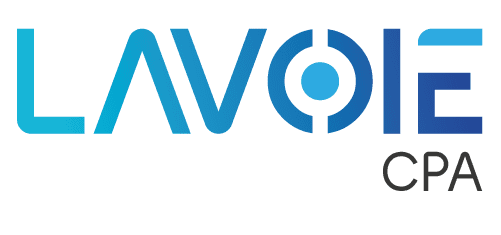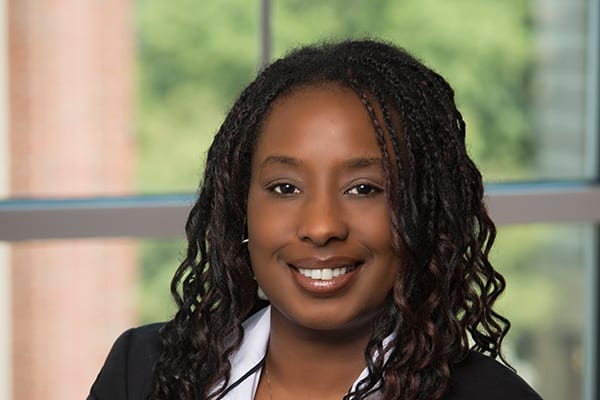
by Sharai Lavoie | Mar 5, 2025 | Planning, Technology
In the evolving world of accounting, teams are inundated with transactional data, compliance demands, and the pressure to deliver real-time insights. At Lavoie CPA, we’ve turned these challenges into opportunities by harnessing Ramp, a spend management platform that automates workflows, enhances accuracy, and empowers strategic decision-making. In this detailed guide, we explore how our team maximizes Ramp’s capabilities, sharing actionable strategies, lessons learned, and best practices to help your organization achieve similar success.
1. Automating Data Syncs: The Backbone of Efficiency
Modern finance hinges on seamless integration between systems. Ramp’s ability to sync with accounting platforms like Sage Intacct eliminates manual data entry and ensures consistency across platforms.
How It Works:
- Two-Way Sync for Precision: Ramp pulls critical data dimensions (e.g., departments, projects, vendors) directly from Sage Intacct. This two-way flow prevents overwrites and ensures that coding rules, and location tags remain aligned.
- Tailored Data Views: With 15+ dimensions available, a team can easily drown in data noise. Our solution? Customizable dashboards. By filtering out non-essential information (e.g., focusing on core dimensions like department, project, and employee), we’ve reduced clutter and accelerated review cycles and transaction processing.
Real-World Impact:
For a client managing multi-location operations, syncing location codes from Sage Intacct to Ramp automated expense allocation across sites. This eliminates hours of manual tagging and reduces coding errors.
Implementation Tips:
- Start with a pilot: Sync only essential dimensions (e.g., department and project) before expanding.
- Use Ramp’s “Saved Views” feature to create role-specific dashboards (e.g., accounts payable team members should have a different view than department heads).
2. Ensuring Data Consistency Through Dimension Syncing
When managing financial systems like Sage Intacct and Ramp, data consistency and mapping are critical to ensuring visibility of expenses. We find that ensuring synchronization between key data points, such as departments, projects, and general ledger codes, can streamline and reporting and reconciliation processes.
Are Your Data Dimensions in Sync?
Proper dimension syncing between platforms ensures that critical data points flow effortlessly across systems.
Specifically, finance teams should ensure department and project codes are timely syncing from Sage Intacct to Ramp. This allows accurate coding in Ramp in order to achieve at least weekly loading of transactions from Ramp into Sage Intacct. By breaking down this sync process into weekly increments, companies can complete their month-end closes more timely and accurately.
Key Benefits of Timely Syncing:
- Accurate Reporting: Dimension syncing ensures that data across all reports remains consistent, providing real-time insights without second-guessing.
- Error Reduction: Proper synchronization reduces errors caused by missing or incorrect codes, minimizing delays during month-end close.
- Increased Efficiency: Teams can spend less time on repetitive tasks and more on high-value analysis.
3. Daily Financial Hygiene: Proactive Oversight Saves Month-End Headaches
Waiting until month-end to review transactions is a recipe for chaos. At Lavoie CPA, we advocate for daily financial check-ins, a practice that transforms reactive firefighting into proactive control.
Why Daily Reviews Matter:
- Catch Syncing Delays: Adding a vendor or employee in Sage Intacct can take up to an hour to reflect in Ramp. Daily checks ensure discrepancies (e.g., a missing vendor code) are flagged and resolved before they cascade.
- Rule-Driven Automation: While Ramp applies rules at the department level (e.g., auto-coding all finance team meals as “Travel & Entertainment”), employee-specific cases still require manual input. Daily reviews keep these exceptions manageable.
Case in Point:
A client’s finance team accidentally charged a software subscription to the wrong project code. Because the error was caught within 24 hours (thanks to daily review of Ramp transactions), the correction took minutes, not days.
Best Practices:
Assign a team member to spend 10–15 minutes daily reviewing:
- New vendors, employees, and other data dimensions are synced from Sage Intacct
- Transactions lacking rules or requiring manual coding
- Ramp’s AI-generated coding suggestions
- Use Ramp’s “Notes” feature to document unresolved items for follow-up.
4. Decoding Ambiguity: Strategies for “Mystery Transactions”
Even with automation, some transactions defy easy categorization. Here’s how we tackle ambiguity:
- Leverage Ramp’s AI Suggestions: Ramp analyzes vendor names, amounts, and historical patterns to propose categories.
- Proactive Research: A 30-second Google search for the vendor name often reveals the nature of the expense.
- Client Follow-Up: For recurring ambiguities, we collaborate with clients to establish biweekly check-ins. This ensures expenses like client dinners or event costs are clarified before coding.
- Refine Rules Over Time: When a previously ambiguous vendor becomes a recurring expense, we create a new Ramp rule to auto-code future transactions.
Fraud Prevention in Action:
Ramp’s outlier detection flagged a $748 restaurant charge for a client with a $100 per-meal policy. The transaction was traced to a hotel stay during a conference and was approved after proper documentation. Without automation, this could have easily slipped through unnoticed.
5. Streamlining Month-End: From Chaos to Calm
Month-end close is often synonymous with stress, but Ramp’s tools transform it into a structured and scalable process.
Our Month-End Playbook:
Finalize Transactions (Weekly):
- Sync all fully coded, approved transactions to Sage Intacct throughout the month. We use weekly checkpoints to identify unapproved or unknown transactions and reach out to our clients.
- Leading up to month end, ensure all transactions are accounted for within 2-3 days prior to the last day of the month.
Address Exceptions (Day 1 of month end close):
- Immaterial unresolved items are moved to a “Pending” ledger for next month.
- Any material unresolved items are immediately followed up with our clients.
Final month end reconciliation (Day 2 of month end close):
- Ensure all transactions are synced from Ramp into the accounting system.
- Complete month-end reconciliation of the Ramp balance to the balance sheet.
6. Ramp’s Strengths and Strategic Workarounds
Where Ramp Excels:
- Real-Time Fraud Detection: Customizable thresholds flag outliers (e.g., expenses exceeding department budgets).
- Scalable Rule Engine: Rules adapt as teams grow, new departments inherit coding logic without manual setup.
Areas to Optimize:
- Employee-Level Rules: Currently, rules apply to departments, not individuals. For now, we use manual entries for employee-specific cases (e.g., a new hire with unique expense needs).
- Vendor Sync Speed: While most data syncs instantly, vendor additions can take up to an hour. We mitigate this by batching new vendor setups midday.
Why Ramp is a Game-Changer for Modern Finance Teams
Ramp isn’t just about automation, it’s about elevating the accounting team from a cost center to a strategic partner. By implementing the strategies above, Lavoie CPA clients have:
- Reduced manual reconciliation time
- Eliminating coding errors through rule-driven workflows
- Improved compliance with real-time fraud alerts
Unlock the Full Potential of Ramp
Whether you’re new to Ramp or seeking to optimize its use, Lavoie CPA’s professionals can help you design a tailored integration strategy. Start the Conversation and discover how to turn financial complexity into clarity.
Start the Conversation.

by Sharai Lavoie | Feb 16, 2021 | Accounting, Blog, Budgeting, Business Intelligence, CFO, Community, Competitive Advantage, CPA, Entrepreneurs, Finance, Financial Services, Growth, Lavoie, Planning, Services, Small Business
Developing a strategic financial plan can seem daunting; however, it can be boiled down into two questions: what are you doing now and where do you want to be? This article walks you through the process of answering these two questions, providing a foundation for developing a financial strategy for your organization.
Question 1: What Are You Doing Now?
Every journey has a starting point and an ending point. Before you can implement a plan to achieve your financial goals, it is important to consider where you are now.
Current State of the Numbers
The current state of your organization’s numbers are a good starting point when determining your organization’s capability to meet its financial goals. Some important questions to ask include:
- Are you in a position of stability? Financial stability is vital to reaching “stretch” goals. If the organization is not currently financially stable, it is important to identify this fact and develop a strategy for achieving stability as a first step in the planning process.
- What is actually coming in/out the door? Knowing the size of the company’s cash reserves is not enough for financial planning. How much revenue is coming into the organization and how much is going out again as expenses?
- What is fueling the majority of your expenses? While increasing sales is one way of improving the organization’s financial footing, the ability to do so depends on the market and potential customers. Identifying and minimizing expenses increases profits as well but is less impacted by external factors.
Culture
Achieving financial goals requires the support of the entire organization. Take a moment to consider your organization’s culture and if the company has the maturity and ability to meet its goals.
- Do your decisions match your vision and mission? An organization’s goals and procedures are important, but actions are even more so. Are your decisions, both recent and historical, helping to move the organization towards its goals?
- Would your employees agree? Employees throughout the organization can have different perspectives, insights, and recommendations. Ask those “down in the weeds” how well the company is following its vision and mission and how they believe things could do better.
Question 2: Where Do You Want To Be?
The effectiveness of a strategic plan can only be effectively measured if there are usable metrics. Before starting to build a plan to improve the organization’s financial position, it is necessary to define success and failure.
Targets
The first step in defining “success” for a financial strategy is defining concrete targets. From there, the next question to ask is what do you need to achieve your targets?
- Human Capital. Does your organization have the human capital necessary to achieve its goals? This not only includes headcount but access to the specific skill sets required now and in the future.
- Acquisitions. Does your organization have the capabilities that it requires? Are there areas of your business where things could be done more effectively or efficiently?
- IT Investments. The IT landscape is evolving rapidly, and new solutions have the potential to dramatically improve operational efficiency and effectiveness. Are there any IT investments that the organization should make that would help in reaching its targets?
Expenses
A failure to properly monitor and manage expenses is one of the most common ways that businesses fail to achieve their financial goals. Gaining visibility into past, present, and future expenditures is an essential part of financial planning.
- How can you gain more visibility into your expenditures? Visibility into expenditures is essential to identifying opportunities for optimizations and cost cutting. How can you achieve a higher level of visibility into business operations?
- Do you have an idea of your cash flow on a daily, weekly, and monthly basis? What level of visibility do you currently have into your organization’s cash flows? Examining cash flows at the daily, weekly, and monthly level can help to identify potential inefficiencies and opportunities.
Beginning Your Strategic Financial Plan
Answering the questions that were asked in this article enables you to lay the groundwork for developing your organization’s financial strategy. To learn about the next steps in your financial planning process, download the CEO’s Guide to Strategic Financial Planning.

by Sharai Lavoie | Jan 11, 2021 | Accounting, Community, Entrepreneurs, Finance, Financial Services, Growth, Lavoie, Planning, Services, Small Business
Lavoie secured Kelley Michalski as Partner and Vice President of Operations. Lavoie is excited to welcome Kelley Michalski to our team as our new Partner and Vice President of Operations in Charlotte, NC. In this role, Michalski will be responsible for managing client operations, maintaining internal control structures, and providing strategic support to our clients and organizations. As Lavoie continues to grow exponentially year over year, Michalski’s leadership will be an invaluable asset in reaching our goals.
“I am truly looking forward to being a part of an established market leader in the finance field,” said Michalski. “I’m excited to become a contributor to the growth of Lavoie.”
Michalski brings with her over 20 years of experience leading strategic financial planning and implementation. Her wide breadth of practice includes everything from overseeing financial performance and organizational governance to managing risk and compliance. She has excelled in creating sustainable, data-driven financial strategies by developing a foundation of analytics to fuel tactical and long-term business decisions. Michalski’s leadership and expertise will be valuable additions to the Lavoie team.
“We are delighted to have Kelley become a Partner with the company. Through Kelley’s involvement with our team over the years, she has shown herself to be an exceptional leader in the industry,” said Sharai Lavoie, Lavoie’s CEO/Managing Member.
Prior to joining Lavoie, Michalski was the Chief Financial Officer for a subsidiary of a Fortune 15 organization and the owner of a small business located in Charlotte. A graduate of Iowa State University, Michalski brings with her an entrepreneurial mindset to support organizations of all sizes.
About Lavoie: Founded in 2009, Lavoie has served as a reliable Charlotte CPA firm that specializes in strategic financial and operational planning for businesses of all sizes. By delivering state-of-the-art strategic support, Lavoie’s clients can focus on growing their business and soar to the next level of greatness. In addition to providing customized solutions for clients, Lavoie prioritizes social justice issues and is extremely involved in the local Charlotte community.
![Sage Intacct’s 6 Key Performance Metrics For Subscription Businesses [INFOGRAPHIC]](data:image/svg+xml;base64,PHN2ZyB3aWR0aD0iMSIgaGVpZ2h0PSIxIiB4bWxucz0iaHR0cDovL3d3dy53My5vcmcvMjAwMC9zdmciPjwvc3ZnPg==)
by Tara Fusco | Oct 29, 2020 | Accounting, Analytics, Blog, Budgeting, Business Intelligence, CFO, CPA, Entrepreneurs, Growth, Intacct, Planning, SaaS, SMBs, Software, Startups, Technology
How Healthy Is Your SaaS Business? These 6 Metrics Will Help You Figure That Out
As a Sage Intacct certified accounting and implementation firm, Lavoie CPA is excited to share the latest findings for SaaS businesses to become successful in 2021.
From startups to organizations ready to scale each one of these indicators is an invaluable piece of information to evaluate your company’s overall health — not to mention prep you for that looming board meeting in the near future.
In this infographic we will dive into why each of these metrics is the difference between getting your next round of funding, scaling year over year, or hitting the wall.
Get the infographic and learn why you should care, how to calculate, and an interesting fact about the following KPIs:
- CARR (Committed Annual Recurring Revenue)
- CAC (Customer Acquisition Cost)
- CLTV (Customer Lifetime Value)
- Churn
- Free Cash Flow
- CCS (Cash Conversion Score)


by Tara Fusco | Sep 22, 2020 | Blog, CFO, Community, Corporate Social Responsibility, Entrepreneurs, Growth, Mentor, Planning, SMBs, Software, Startups, Technology
As the election season draws closer and the concerns of small businesses continue to grow in the wake of the pandemic, SMB’s are joining forces to make sure their voices are heard in congress. According to a Goldman Sachs survey released on September 8, 88% of small business owners have exhausted their PPP loan funding; with 43% of Black small business owners depleting their cash reserves by the end of the year.
To help amplify US small business needs, Goldman Sachs is using its 10,000 Small Businesses (10KSB) Initiative to serve as a policy platform and community resource center. However, prior to the COVID-19 crisis, the 10KSB alumni collectively represented $12 billion in revenues and employed 175,000 people. More notably, 44% of these businesses are family-owned and 66% are minority and women-owned businesses.
“The 10,000 Small Businesses Voices initiative is designed to help small business owners in the United States advocate for policy changes that will help their businesses, their employees, and their communities,” according to Goldmansachs.com. “We provide the 10,000 Small Businesses Voices community with the tools, resources, and training needed to make their voices heard and drive tangible impact against real issues.”
Among the many tools to assist small businesses, the program includes surveys, open letters to congress, and ongoing virtual events to help guide owners through ongoing challenges and the most recent policy changes.
One of these events was the Virtual Capitol Hill Day held on June 9th -11th. Over three days, 2,100 small business owners connected with Members of Congress through 434 online meetings across all 50 states, Washington D.C. and Puerto Rico. Lavoie CEO, Sharai Lavoie, was named a NC Hill Week Captain and lead discussions with congressional leaders and small businesses across the state.
Lavoie led three discussions one of which was with Congresswoman Alma Adams, representing North Carolina’s 12th District. Discussion topics included:
“I was thrilled to participate in this initiative,” says Lavoie CEO, Sharai Lavoie. “It’s programs like these that will give SMBs a fighting chance and help promote policies that positively impact the everyday American business owner.”
To learn more about the 10,000 Small Business Voice initiative, check out the website to access resources or participate in the many surveys to inform congress of US business owners’ ongoing needs.

by Tara Fusco | Aug 31, 2020 | Blog, CFO, Community, Corporate Social Responsibility, Entrepreneurs, Growth, Mentor, Planning, SMBs, Software, Startups, Technology
Charlotte Business Leader Sharai Lavoie joins Jerrold Kinney, De’Marcus Miller, and DeAndrae Watson for a discussion on race and the role the youth sports clubs and sports industry can play in creating positive change within the business community. This captivating conversation explores systemic racism and the vital dialogue that should exist between equality advocates and business leaders.
Watch the full video below, and check out a few of the highlights!

Key Takeaways
Simply put, we as a society are at the crossroads of cultural advancement and organizational ineptitude. The topic of systemic racism, workplace inequality, and homogenous decision-making can no longer be ignored. However, the definition of the “talk” changes from colleague to colleague as do the continuous actions that need to follow.
Over the years, sports professionals have championed those difficult conversations (“talks”) and been at the nexus of sustainable change and political progress. And now, with unparalleled access to recorded footage of police brutality and the confluence of back-to-back violence on black men and women, professionals and companies have an obligation to drive national momentum and activate the diversity conversation.
Here are some very real tips on how to move the equality needle from our Race Talks in Sports panelists:
Are you an athlete or a professional in the sports industry? Here’s how you can influence or participate in sustainable change:
- Continue to be active in your communities… every day
- Have your beliefs front and center… literally wear them where the cameras will see
- Always participate in the conversation… no matter where you are
- Get over your anxiety and fears surrounding communication… no matter what environment you’re in, someone can learn from your experiences
- Bring your full, authentic self to the workplace… the court, the field, or the office
A company’s commitment to diversity
How to do more than just check the box
Unfortunately, most organizations check the diversity and inclusion box by creating an internal group, announcing it on social media, and that’s it. Committing to diversity means providing your employees the opportunity to be mentored and propelled into their desired industry or professional stature. Companies need to rethink how they can use these diversity and inclusion groups to present goals to leadership, and, over time, show what has actually been accomplished. This allows for true accountability and a way to track how quickly programs are progressing and identify ways to continuously improve.
Start improving your diversity and inclusion initiative by focusing on these 5 areas:
- Evaluate Your Organization & Find The Right Skills That Can Lead Change
- Build A Community With Accessible Communication Channels & Resources
- Educate Everyone In The Company From Leadership to Interns
- Create Transparent Goals That Can Be Shared & Tracked
- Drive Accountability That Can Be Analyzed On A Consistent Basis
Ways to Get Involved
Join the Charlotte Sports + Business Networking Group
Charlotte Sports+Business is a free networking group connecting sports marketing and sports industry executives in the Queen City.
Join the Racial Equity Institute
A Greensboro based organization, the Racial Equality, Institute helps individuals and organizations develop the tools they need to challenge patterns and grow equity within their communities.
Watch Uncomfortable Conversations With A Black Man
Emmanuel Acho sits down to have an “uncomfortable conversation” with white America in order to educate and inform on racism, system racism, social injustice, rioting & the hurt African Americans are feeling today.
Moderator
Sharai Lavoie
CEO
Lavoie CPA
Participants
DeAndrae Watson
Vice President
Octagon
De’Marcus Miller
Senior Marketer
Jerrold Kinney
Senior Marketing & Strategy Professional





![Sage Intacct’s 6 Key Performance Metrics For Subscription Businesses [INFOGRAPHIC]](https://lavoiepllc.com/wp-content/uploads/2020/10/Sage_BlogHeader-1080x482.png)



